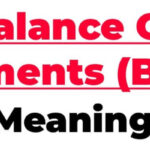Communication theory is the study of how people exchange information and meaning through verbal, non-verbal, and written language.
Many different theories of communication have been developed over the years to explain and understand how people communicate with one another.
Here below, we will explore the various theories of communication and discuss how they can be applied to everyday life.
Table of Contents
ToggleWhat is Communication Theory
Communication Theory is the study of how people use different symbols, signs, and behaviors to send, receive, and interpret messages.
See Also: What is Oral Communication
It seeks to explain how messages are understood and exchanged between two or more individuals, and how meaning is created through these communication processes.
Different Theories of Communication
Different Theories of Communication have been developed over the years to explore the various ways in which communication works. These theories include:
- Symbolic Interactionism
- Social Exchange Theory
- Uses, and Gratifications Theory
- Structural Functionalism
- Critical Theory
- Agenda Setting Theory
- Theory of Cognitive Dissonance
- Theory of Communication and Accommodation
- Confirmation Bias
Each of these theories has its unique way of looking at communication and can be used to further understand how messages are exchanged and interpreted.
-
Symbolic Interactionism
Symbolic interactionists argue that people use symbols to create meaning in their lives. Symbols may include words, gestures, facial expressions, objects, and actions.
Individuals interpret symbols based on the context of the situation and their own beliefs and values.
They believe that when people interact with each other, they constantly create meaning through the symbols they use.
As such, symbolic Interactionism helps explain why different theories of communication exist.
People have different ways of interpreting symbols, which can lead to different forms of communication.
-
Social Exchange Theory
The Social Exchange Theory was first introduced in the 1950s by John Thibaut and Harold Kelley and has been further developed over the years by other researchers.
See Also: What are the Components of Communication
This theory helps to explain the motivation behind different types of communication and how people interact with each other.
By understanding the exchanges that occur during communication, it can be easier to understand why people engage in certain behaviors and how communication can be improved for better outcomes.
This theory provides valuable insight into the dynamics of interpersonal communication, helping us to gain a better understanding of what are Communication Theory and Different Theories of Communication.
No matter what type of communication you are studying, understanding different theories of communication can help you better understand the processes and dynamics that take place during interactions.
-
Uses and Gratifications Theory
The primary assumption behind the Uses and Gratifications Theory is that individuals are active, rather than passive, in their interactions with media.
Individuals seek out and engage with certain types of media content to satisfy their needs, rather than being manipulated by the media.
This includes needs such as entertainment, information, companionship, identity formation, and personal relationships.
By understanding how and why people use different types of media, it is possible to better understand the effects of communication and how it shapes our lives.
-
Structural Functionalism
At its core, Structural Functionalism holds that communication creates and maintains relationships between individuals, groups, and organizations, and keeps the overall social system functioning properly.
It focuses on how these relationships are established and maintained through communication, including verbal and nonverbal messages, media, and other means.
This theory also highlights the role of technology in facilitating effective communication.
The main point of Structural Functionalism is that the purpose of communication is to maintain the social system by maintaining relationships between individuals, groups, and organizations.
By understanding how different elements of the system work together, we can better understand how to create effective communication systems.
Ultimately, this theory helps us understand how different components of society interact with each other and how we can use communication to promote positive social change.
-
Critical Theory
What is Communication Theory? It’s a complex and ever-evolving field of study. Different Theories of Communication have developed to explain how we communicate and understand messages, both in interpersonal relationships and within groups.
See Also: What are the Levels of Communication
One of the most important theories of communication is Critical Theory.
At its core, Critical Theory is concerned with creating social change through dialogue, understanding, and challenging power structures.
It also seeks to understand how people’s views of the world are shaped by their experiences, including those based on race, gender, class, and religion.
-
Agenda Setting Theory
According to the agenda-setting theory, how much attention a news story receives helps mass media firms gauge what the general public finds newsworthy.
The power of the media to push their agendas on the general population is referred to as salience transfer and is a word that is frequently used.
-
Theory of Cognitive Dissonance
The psychological tension brought on by having two opposing or incompatible beliefs or attitudes is known as cognitive dissonance.
One could like someone yet not agree with their habits, for instance. According to the notion, a person seeks equilibrium in their beliefs.
One will therefore avoid hearing opposing ideas or alter their beliefs to match their behavior to reduce dissonance.
-
Theory of Communication and Accommodation
When people adapt their communication styles to others, according to the communication accommodation theory, this occurs.
There are two approaches to achieving these shifts in verbal and nonverbal communication styles: convergence and divergence.
By highlighting the contrasts of the group, they identify with, differentiation is utilized to promote group identity.
Groups having a strong sense of ethnic or racial pride frequently use divergence.
Convergence, which emphasizes conformity to the communication preferences of the other person with whom they are communicating, is more frequently adopted by weaker people seeking social favor.
See Also: Characteristics of Communication
-
Confirmation Bias
According to the theory of confirmation bias, humans have biased perspectives on the world.
People continue to choose information and media that support their worldviews, according to this statement.
Conclusion
In conclusion, Communication Theory is a complex and multifaceted area of study that covers a wide range of topics and ideas.
Different Theories of Communication offer different perspectives on how communication works and is perceived.
These theories include Symbolic Interactionism, Social Exchange Theory, Uses, and Gratifications Theory, Structural Functionalism, Critical Theory, and Framework of Communication Theory.
Each theory has its own unique set of principles and approaches, but all focus on the importance of understanding and utilizing communication to better interact with others.
By looking at the different theories of communication, we can gain greater insight into the complexities of human communication and better understand how people interact with one another.










